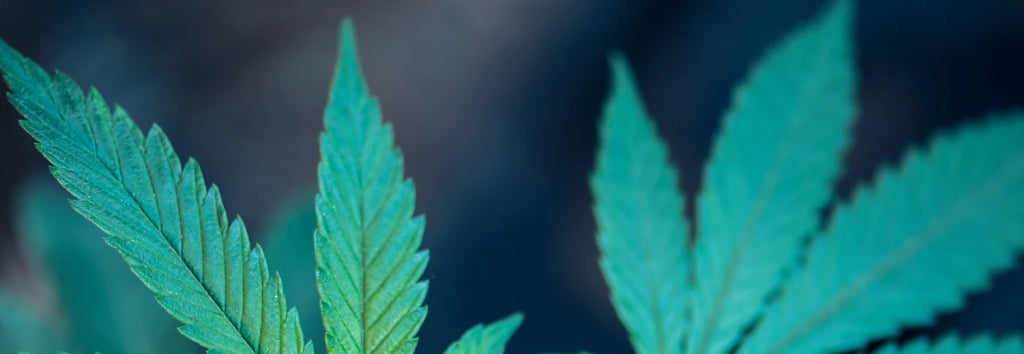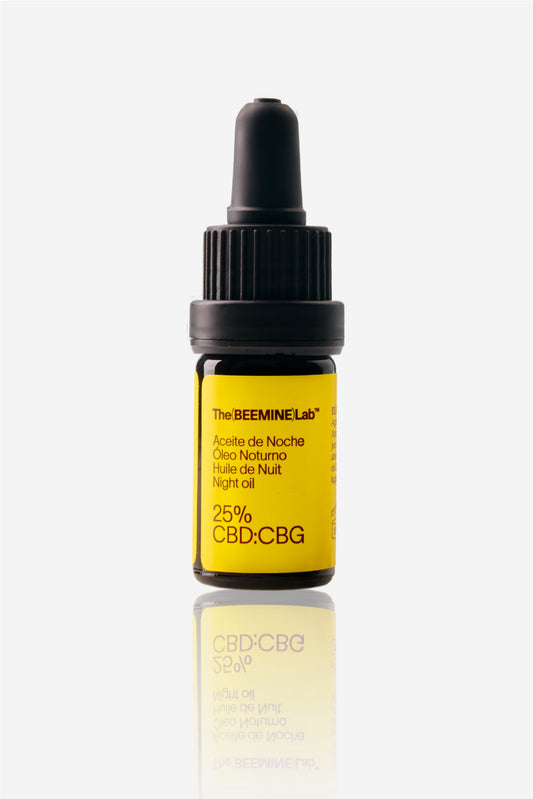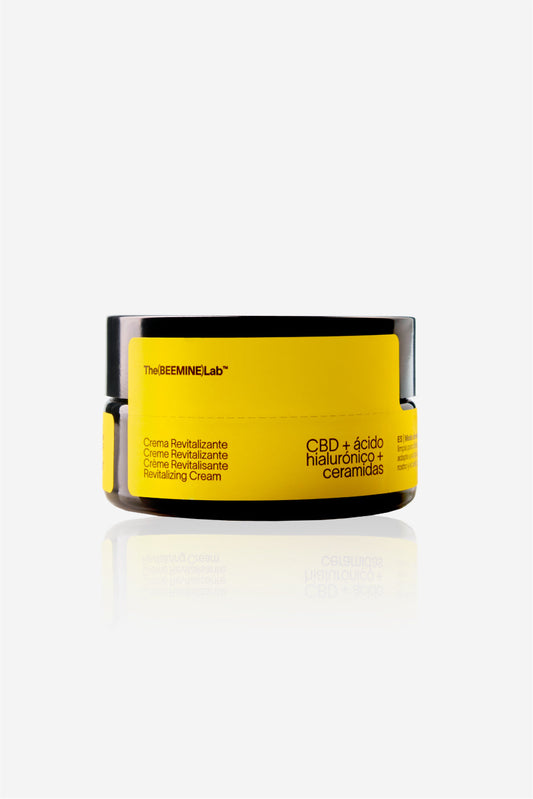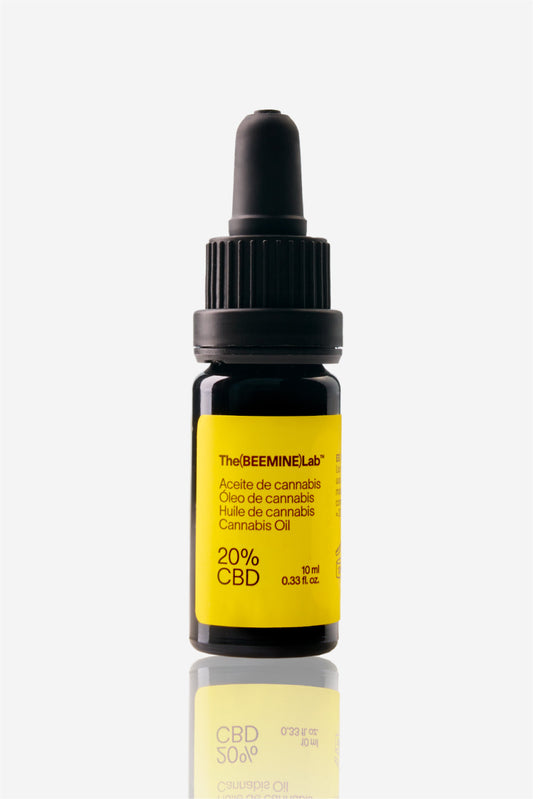What is Cannabidiol?
Cannabidiol , also known as CBD , is a natural compound that is neither psychotropic nor psychoactive and has great therapeutic potential. More and more studies and research are demonstrating its beneficial properties and ability to alleviate symptoms of various diseases. Some of these conditions are stress, arthritis or muscle pain, which, through the use of CBD cream, oil or other types of textures, allows to improve the quality of life of consumers. [/vc_column_text][vc_column_text] This component is one of the two main cannabinoids that we can find in the Cannabis or hemp plant along with THC. It is part of the plant in variable proportions depending on the variant of this. That is, in some strains of Cannabis Sativa we can find minimum amounts of CBD, others where it is more abundant or, alternatively, it is in balance with THC. The properties of cannabidiol are of great importance at a therapeutic level and it lacks the psychoactive factor normally associated with THC. That is, the psychoactivity of cannabidiol is characterized by its anxiolytic properties, while the psychoactivity of THC is related to its psychotropic effects.How is Cannabidiol used?
Cannabidiol is a component with great potential in terms of health, and that is why we can find a wide variety of options for its use, all of them with advantages and disadvantages.- CBD oil . It can be administered topically or orally (under the tongue), the latter being the most common way of using cannabidiol. It has optimal absorption and is hydrophobic, that is, it repels water, so the body does not absorb it well if it does not use a carrier oil such as olive, hemp or MCT.
- Smoking CBD . Smoking cannabidiol has a high bioavailability. In other words, it reaches the bloodstream faster than other uses. Its speed is due to the fact that it passes directly into the bloodstream thanks to the pulmonary capillaries, although the effects of cannabidiol do not last as long as in consumables or oils.
- Vaporizing CBD . Vaporizing should not be confused with vaping. Vaporizers do not contain liquids, but CBD flower, which is heated by precisely controlling the temperature and releasing cannabinoids more efficiently without toxic products. Using a vaporizer gives greater benefits than smoking cannabidiol. To begin with, vaporizing cannabidiol does not burn the substance to be consumed, thus reducing the risk of inhaling adverse compounds into the lungs. In addition, its bioavailability is as good as that of smoking.
- CBD Edibles . The use of marijuana edibles started in the form of cookies or brownies, but now we can find more products on the market with CBD. They have a natural flavor, although it is not for everyone. Their intake stands out for having a delayed onset of effects (it takes up to 1 hour) but its duration is longer. They are ideal when you cannot take a quick dose of CBD or you need longer-lasting relief.
- CBD Tinctures and Sprays . Tinctures are similar to CBD oil, but are taken sublingually. This way, they directly enter the bloodstream through the capillaries in the mouth. They provide quick relief in just 15 minutes. Sprays are introduced into the nostrils and are absorbed into the bloodstream through the nasal capillaries. However, it is true that both tinctures and sprays lose the beneficial effects of carrier oils.
- CBD Creams . They are very easy to use, by massaging them into any type of skin. Instead of going directly into the bloodstream, their active ingredients act only in the treated area, absorbed by the skin. It helps to soothe, protect and moisturize the skin.
- CBD transdermal patches . Mixed with certain medications, cannabidiol penetrates the skin and reaches the bloodstream. To give us an idea, it works like a nicotine park, providing the slow release of the active components.
- CBD Suppositories . If you want to go further than transdermal patches, you can use cannabidiol suppositories. They offer great absorption of CBD. The bioavailability of CBD suppositories is still being studied, so their exact effectiveness is not yet known.

Does using cannabidiol have side effects and contraindications?
There have already been several investigations carried out to assess the effects and benefits of CBD, even the World Health Organization (WHO) also carried out its studies examining all the research that had been carried out so far on CBD. Finally, the WHO ruled that cannabidiol is a well-tolerated and highly safe component. Moreover, the side effects of its intake may be due to the interaction with other medications. Likewise, he also acknowledged that the adverse effects of CBD such as fatigue, diarrhea, dry mouth, dizziness or others are considered mild and disappear after a short time.What precautions should be taken?
Not all people are affected equally by CBD consumption , and it can sometimes cause side effects. To avoid these adverse effects, it is advisable to know what type of patients are not advised to use CBD as a therapeutic treatment, as well as what precautions should be taken when using cannabidiol for health.- During pregnancy . CBD intake is not recommended as it enters the bloodstream and there is still insufficient research on the use of CBD during pregnancy and breastfeeding.
- Children . While CBD-based drugs such as Epidiolex can be taken by children, other forms of CBD may not be safe. When in doubt, it is best to consult with a doctor to avoid putting your child's health at risk.
- Diseases and pathologies . Certain liver diseases only tolerate low doses of cannabidiol. It is important to avoid self-medication to avoid more serious negative effects. As for Parkinson's patients, indiscriminate use of this component is not recommended, as it can aggravate the pathology.
- Herbal use . Caution should be exercised when taking this medication or supplement in combination with other herbs or ingredients, as it may cause dizziness or drowsiness.
Benefits and properties of cannabidiol
The use of this component can result in cannabidiol having positive health benefits and properties. Some evidence of the beneficial properties of cannabidiol are:- Analgesic.
- Anticonvulsant.
- It reduces nausea and is antiemetic.
- Anxiolytic.
- Reduces addiction to drugs such as heroin, cocaine and alcohol.
- Anti-inflammatory.
- Neuroprotective.
- Antioxidant.
- Antitumor.
- Antipsychotic.
- Immuno-modulator.
 The set of these properties observed in CBD makes it used in the treatment of many diseases and conditions such as:
The set of these properties observed in CBD makes it used in the treatment of many diseases and conditions such as:
- Neurodegenerative diseases such as Parkinson's, Alzheimer's or multiple sclerosis.
- Anxiety.
- TEA (Autism Spectrum Disorder).
- As an accompaniment to chemotherapy treatment.
- Epilepsy.
- Chemical dependencies.
- Psychosis.
- Chronic inflammatory diseases such as Crohn's disease, chronic polyarthritis or irritable bowel syndrome.
- Antitumor treatment.
Can I buy cannabidiol?
In Spain, we can obtain cannabidiol through topical use in the form of creams and oil; although it is advisable to obtain the instructions and advice of a medical specialist or a pharmacist for its consumption. In certain countries, both THC and CBD are prohibited due to the negative consequences caused by recreational marijuana use. Although the FDA and some states have approved CBD as a medicine and food supplement, it is best to check the laws of each country to know whether or not we can transport CBD or acquire it freely and avoid unpleasant moments.Where to buy cannabidiol?
Currently, a wide variety of products made from cannabidiol can be found on the Spanish market. Oil is undoubtedly the most popular and common product in Spain, as it provides a versatile and safe form with different application modes. When asked where to buy CBD in Spain, it is possible to do so by:- Online store . Online stores usually offer fast delivery, with complete discretion and anonymity. In addition, they often offer discounts, offers and promotional codes from Spanish physical CBD store websites.
- Importation . Ordering CBD from abroad is possible, although it should not be forgotten that it is mandatory to pay the different taxes and VAT that are included in the importation of products to Spain.
- Physical store . This is the most traditional way to get CBD. In Spain, it is possible to buy CBD in a physical store and evaluate the products offered there in person. There are various points of sale throughout the country.
Conclusion on cannabidiol
Even today, cannabidiol or CBD is still under investigation. To date, it has been tested with positive results in people suffering from epilepsy caused by syndromes (Dravet or Lennox-Gastaut). Despite its benefits, it is always advisable to follow the guidelines recommended by your doctor. On the other hand, there are promising clinical trials on its use in cases of cancer or Parkinson's, although its effects have not been fully proven, so it is recommended to use CBD with caution. Finally, it should be noted that CBD is still banned in many countries due to its false association with psychotropic effects, which is why it is considered illegal. To ensure that you can travel with CBD or take it freely, it is advisable to check the laws of the destination country to avoid fines. Literature:- ElSohly MA, et al. Phytochemistry of Cannabis sativa L.Phytocannabinoids . Progress in the Chemistry of Organic Natural Products, vol 103. Springer, Cham. 2017. Print.
- Booth, Martin. “ Cannabis: A History ”. 1st Picador ed. New York: Picador, 2005. Print.
- Canna Foundation.” The endocannabinoid system ”. 2016. Web.
- Kaplan, Josh (Kalapa Clinic) “ CBD as preventative medicine ” 2018. Web
- Atakan, Zerrin. “ Cannabis, a complex plant: different compounds and different effects on individuals .” Therapeutic advances in psychopharmacology vol. 2.6: 241-54. 2012. Web.
- Bridgeman, Mary Barna, and Daniel T Abazia. “ Medicinal Cannabis: History, Pharmacology, And Implications for the Acute Care Setting .” P & T : a peer-reviewed journal for formulary management vol. 42.3: 180-188. 2017. Print/Web.
- Mounessa, Jessica S. et al. “ The role of cannabinoids in dermatology ” Journal of the American Academy of Dermatology , Volume 77, Issue 1, 188 – 190. 2017. Print/Web.
- Pamplona, FA et al., “ Potential clinical benefits of CBD-rich Cannabis extracts over purified CBD in treatment-resistant epilepsy: observational data meta-analysis” 2018
- J Koehler, “Who benefits most from THC: CBD spray? Learning from clinical experience” 2014







